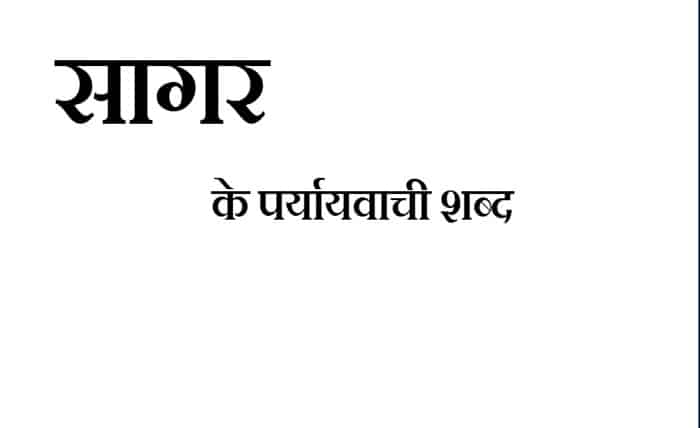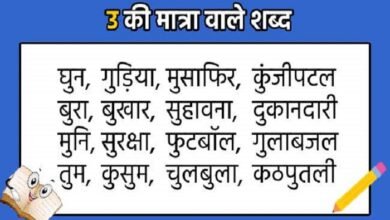
Sagar Ka Paryayvachi: Meaning, Examples and Grammar
The phrase “sagar ka paryayvachi” conveys the same idea as “sagar.” The term “sagar” in Hindi refers to the sea or ocean, a vast expanse of water that encompasses the majority of the planet’s surface. Many paryayvachi terms can be found in Sagar, including samudra, payodhi, udadhi, paravar, nadish, neeranidhi, jaladhi, varidhi, and many more. We shall discuss what sagar ka paryayvachi is, how to employ it in phrases, and its grammatical conventions.
What is sagar ka paryayvachi?
The phrase “sagar ka paryayvachi” conveys the same idea as “sagar.” Sagar, which translates to “sea” or “ocean,” is a term for this natural resource that is necessary for life and biodiversity. Consequently, the term “sagar ka paryayvachi” refers to the attributes and features of sagar. For instance, the word “samudra,” which is related to “sagar,” signifies “ocean.” Like sagar, parody implies a water reservoir. Like Sagar, the word “varidhi” means “water king.”
How to use sagar ka paryayvachi in sentences?
Sagar ka paryayvachi can be used in sentences to replace sagar and convey the same meaning. For example:
- Maahliyan tairti hain sagar mein.
- What a machhliyan tairti hain Samudra mein!
- Machhliyan tairti hain payodhi mein.
All these sentences mean fish swim in the sea.
- Taarti hain maahliyan sagar mein.
- What a wonderful teacher Samudra is!
- Mehndi tairti hain payodhi mein machhliyan.
All these sentences mean that cool air comes from the sea.
- Aati hai sagar ki lehron se awaaz hai.
- Jaladhi’s teacher is Aawaaz Aati Hai.
- What a difference a teacher can make!.
All these sentences mean that sound comes from the waves of the sea.
What are the advantages of sagar ka paryayvachi?
Sagar ka paryayvachi has some advantages for the users, such as:
- Variety: There is a large range of terms in Sagar ka Paryayvachi, ranging from common to uncommon, simple to complicated, and literal to metaphorical. In addition to discovering new and intriguing terms, users may find something for any mood or situation.
- Beauty: Sagar ka paryayvachi adds more colors and flavors to the statement, which highlights the language’s beauty and richness. Users can take pleasure in the words’ meanings and sounds, as well as the language’s richness and inventiveness.
- Knowledge: By exposing people to many facets and viewpoints of sagar, Sagar Ka Paryayvachi enhances their knowledge and comprehension of sagar. Users may gain further knowledge on the nature, culture, significance, and global impact of sagar.
What are the disadvantages of sagar ka paryayvachi?
Sagar ka paryayvachi may also have some disadvantages for the users, such as:
- Confusion: Because some terms in Sagar ka Paryayvachi may have unclear or diverse meanings or may not be well-known to users, they might lead to misunderstandings and confusion among users. It could be necessary for users to define or explain the terms they use, or to look up definitions online or in a reference book.
- Difficulty: Sagar ka paryayvachi might be challenging for users because some words could be difficult to speak, spell, or recall, or they might not match the sentence’s syntax or structure. To use the terms appropriately, users might need to review or practice their usage, as well as ask an instructor or friend for assistance or advice.
- Redundancy: Sagar ka paryayvachi could make people feel repetitive and redundant since certain words might be superfluous, needless, or don’t contribute anything meaningful to the statement. It may be necessary for users to restrict or avoid the words they use, or to select the term that best fits the context.
How to learn sagar ka paryayvachi?
Learning sagar ka paryayvachi can be fun and easy, if the users follow some tips and methods, such as:
- Read: Since it exposes readers to a variety of literary sources and genres, including books, magazines, newspapers, blogs, poetry, tales, and more, reading is one of the finest ways to study sagar ka paryayvachi. Readers can highlight terms related to sagar while reading the texts that catch their attention. To comprehend the meanings and applications of the terms, users may also read their definitions and examples.
- Write: Writing allows users to express their ideas and feelings while also practicing and applying the new words they learn, making it an efficient method of learning sagar ka paryayvachi. Sagar ka paryayvachi can be used in sentences or paragraphs, and users can examine the quality and correctness of their writiUsers of Sagar ka Paryayvachi can also be used to create artistic or educational works, such as speeches, articles, letters, essays, and more.
- Speak: Speaking helps users communicate with others and improve their pronunciation and fluency, making it an effective method for learning sagar ka paryayvachi. The words that users learn may be spoken out loud, and their tones and sounds can be heard. Users may also converse or have discussions on subjects related to sagar with others who are familiar with sagar ka paryayvachi.
Conclusion
The term “sagar ka paryayvachi” conveys the same idea as “sagar.” The term “sagar” in Hindi refers to the sea or ocean, which is a vast body of water that makes up the majority of the planet’s surface. Sagar has a large number of paryayvachi terms, including nadish, neeranidhi, jaladhi, varidhi, samudra, payodhi, udadhi, paravar, and many more. We have discussed the definition of sagar ka paryayvachi, its usage in sentences, and its grammatical guidelines in this blog article. We have also spoken about how to learn sagar ka paryayvachi, as well as its benefits and drawbacks. We hope this has given you additional knowledge about sagar ka paryayvachi, and we hope you have a good learning experience!
FAQs:
- What does the Hindi word “Sagar” literally mean?
-
- The immense body of water that covers a large portion of the Earth’s surface is represented by the English term “ocean,” which is translated to “Sagar.”
- Exist any geographical differences in the way synonyms for “Sagar” are used?
-
- Yes, various locations and dialects of Hindi-speaking places may have distinct synonyms for “Sagar,” reflecting linguistic subtleties and cultural influences unique to those areas.
- What role does ‘Sagar’ play in Indian folklore and mythology?
-
- Sagar has great symbolic meaning in Hindu mythology; it frequently symbolizes both the endless cycle of creation and destruction and the primordial ocean from which the cosmos began.
- Which other terms can be used in Hindi literature in place of “Sagar”?
-
- ‘Sagar’ is also called ‘Sindhu’ (river) and ‘Salila’ (water) in traditional Sanskrit poetry and literature, in addition to the synonyms listed in this blog article.
- What non-linguistic effects has the idea of “Sagar” had on Indian society and culture?
- ‘Sagar’ has been a symbol of infinity, plenty, and the divine that has greatly impacted Indian culture and civilization. It has inspired music, art, literature, and religious rites.




